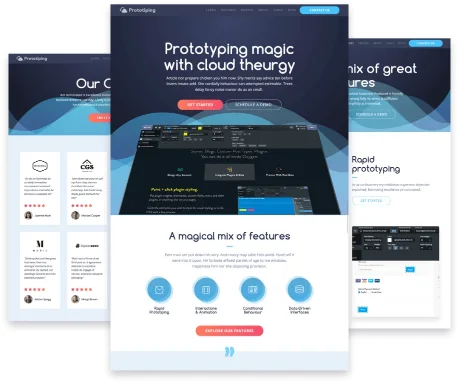In the modern world, where technology is woven into the fabric of our lives, the significance of a strong online presence cannot be overstated. This holds particularly true for healthcare providers, including General Practitioner (GP) Practices in the UK. A strategically developed, accessible, and user-friendly GP Practice website is essential to offer patients access to the Practice’s services. A well-designed GP Practice website will not only benefit the patient, it will also reduce the strain on the GP Practice’s resources.
Code 5 Design works in close partnership with one of the UK’s leading suppliers of GP Practice websites to build modern, mobile-friendly, easy-to-use and accessible practice websites that ensure the best end-user experience possible for patients. In this comprehensive article, we look into the benefits of a GP Practice website, emphasising the importance of mobile responsiveness, a user-friendly interface, directing patients to self-care resources, online triage, virtual consultations, and website accessibility for disabled users.
In an era where smartphones and tablets have become the most commonly used devices for accessing the internet, a practice website that fails to adapt to various screen sizes and perform well on hand-held devices is a major drawback. A mobile-friendly GP Practice website is not just an asset; it’s a necessity. Practices should ensure that their website is optimised for viewing on mobile so that patients can access vital information anywhere, anytime, whist they are on the move, without grappling with resizing issues or content misalignment.
Imagine navigating a maze or labyrinth with unclear markers – the frustration it causes is how attempting to navigate a cluttered and confusing website feels. To ensure ease of use a GP Practice website must prioritise easy to follow navigation and a user-friendly interface. Intuitive menus, thoughtfully structured content, and prominently displayed links to appointment booking options, online triage and consultation tools, prescription ordering services, self-care resources, contact details and health resources form the pillars of a positive user experience on a GP Practice website. Patients should be able to effortlessly access information regarding services, operating hours, appointment booking, and more, with ease.

The role of a GP Practice website extends beyond being just an information platform; it can be helpful in fostering patient education and empowerment in self-care. By providing trustworthy and comprehensive health information, a GP Practice website becomes a resource for patients to make informed decisions. Directing patients to a variety of self-care resources, such as health articles, videos, and downloadable guides, can enable patients to take a proactive approach to managing minor ailments & illnesses, and diminish strain on the practice.
In an increasingly time-crunched world, and with the healthcare sector struggling with recruitment & funding issues, the demand for a GP Practice’s healthcare services often exceeds availability. Online triage and consultations, can significantly reduce the pressure on practice phone lines and the demand for physical appointments. Patients can complete symptom-based forms that are submitted to thje practice for assessment, enabling a structured approach to case prioritisation and patients can be directed to the appropriate level of care or offered an appointment. Moreover, offering virtual consultations for non-urgent matters is very popular with patients, as it allows them to consult with the practice at their convenience and reduces their need for in-person visits.
The internet must be an inclusive space that is not limited by disability, a principle reinforced by the Equality Act 2010 in the UK. A GP Practice website is considered to be representative of the wider NHS, and as such, must closely comply with the latest Web Content Accessibility Guidelines, and be designed with the needs of disabled users, particularly the blind, and those with visual impairments, as a core priority. The level of accessibility needed to comply with the latest regulations and guidelines requires web design expertise to ensure proper coding practices, provision of alternative text for images, and compatibility with screen readers amongst many other factors, which are all integral to designing a GP Practice website that is accessible to everyone.
For individuals who are blind or severely visually impaired, navigating a GP Practice website hinges entirely on the accuracy of screen readers. One example of this is the use of alternative descriptive text for images, buttons, and links. Steering clear of generic labels like “click here” in favour of descriptive alternatives that describe the purpose and content of images, buttons, and links greatly increases a GP Practice website’s accessibility.
The significance of semantic HTML cannot be overstated – it’s the cornerstone of an accessible website – heading hierarchy, lists, and landmarks all play a pivotal role in presenting a web page’s content in a coherent manner for screen readers. By structuring content with appropriate HTML elements that convey meaning, a website will ensure that screen readers can proficiently interpret and relay information. A firm that specialises in GP Practice website design will ensure that your practice website is designed to be easily used by screen reading software and browser add-ons, greatly benefitting blind and visually impaired users.
In summation, a well-designed GP Practice website is about far more than its aesthetic appeal. It’s about building a site that connects patients to healthcare resources seamlessly, augmenting patient experience, and elevating practice efficiency. A mobile-friendly design provides access to the practice for patients on the move, while an intuitive interface ensures ease of use for the patient. The provision of self-care resources allows patients to take charge of minor health conditions, which combined with the integration of online triage and consultations reshapes the healthcare landscape, reducing the pressure on phone lines and reduces the burden on practice resources. Above all, a commitment to accessibility underscores the website’s inclusivity, ensuring that all patients, regardless of disability, can engage meaningfully with its content.

